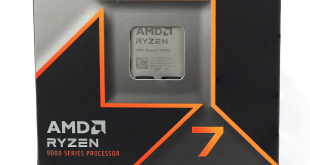Today Intel are celebrating 40 years of creating world class microprocessors. This day, 40 years ago they released the Intel 4004, which kick started the digital revolution. For those of you old enough to remember all of the 40 years with clarity then I envy you, because you have assuredly seen some dramatic changes.
The Intel 4004 was a groundbreaking design at the time but compared to today's 2nd Gen Core processors it was 350,000 slower and each transistor used about 5,000 times more energy. In this same time period, the price of a transistor has dropped by a factor of about 50,000.
The Intel 4004 was a 4-bit central processing unit (CPU) released by Intel Corporation in 1971. It was the first complete CPU on one chip, and also the first commercially available microprocessor. Such a feat of integration was made possible by the use of then new silicon gate technology allowing a higher number of transistors and a faster speed than was possible before.
The first public mention of 4004 was an advertisement in the November 15, 1971 edition of Electronic News, and if you have a copy of that, please scan it in and email us at news (at) Kitguru.net, we would love to read it.
Technical specifications
- Maximum clock speed was 740 kHz
- Instruction cycle time: 10.8 µs[7] (8 clock cycles / instruction cycle)
- Instruction execution time 1 or 2 instruction cycles (10.8 or 21.6 µs), 46300 to 92600 instructions per second
- Separate program and data storage. Contrary to Harvard architecture designs, however, which use separate buses, the 4004, with its need to keep pin count down, used a single multiplexed 4-bit bus for transferring:
- 12-bit addresses
- 8-bit instructions
- 4-bit data words
- Instruction set contained 46 instructions (of which 41 were 8 bits wide and 5 were 16 bits wide)
- Register set contained 16 registers of 4 bits each
- Internal subroutine stack 3 levels deep.
Fast forward to today, and here we are with the astounding Intel Core i7 3960X Extreme Edition processor, which we reviewed yesterday in three separate motherboards. Hard to believe today that in some years time, we will be looking back at this processor and laughing at how inefficient the architecture is.
Whats next? Intel say “Future microprocessors developed on Intel’s next-generation 22nm manufacturing process are due in systems starting next year and will deliver even more energy-efficient performance as a result of the company’s breakthrough 3-D Tri-Gate transistors that make use of a new transistor structure. These novel transistors usher in the next era of Moore’s Law and make possible a new generation of innovations across a broad spectrum of devices.
While looking back to see how much things have changed since the microprocessor’s introduction, it’s astounding to think about the future and how this digital revolution will continue at a rapid pace as microprocessor technology continues to evolve.”
Justin Rattner, Intel's chief technology officer says “The sheer number of advances in the next 40 years will equal or surpass all of the innovative activity that has taken place over the last 10,000 years of human history.”
Kitguru says: Cheers to Intel for 40 years of pioneering chip design.
 KitGuru KitGuru.net – Tech News | Hardware News | Hardware Reviews | IOS | Mobile | Gaming | Graphics Cards
KitGuru KitGuru.net – Tech News | Hardware News | Hardware Reviews | IOS | Mobile | Gaming | Graphics Cards






They have done a great job ever since the Core2Duos, as such congratulations are in order for their 40th anniversary.
It’s amazing to think about how far we have come in just 40 short years. The new Sandy Bridge-E i7-3960X has 2.27 BILLION transistors that are roughly 1 MILLION TIMES as many transistors as the 4004.
The amount of progress is incredible. And that is just in the processor market, everything about electronics has advanced by leaps and bounds. And we are not done yet. We still have further to push, and we show no signs of slowing down.